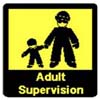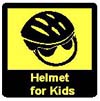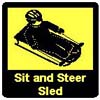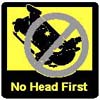
Sledding Injury Prevention
Sledding Can be Fun and Safe
The speedy, bumpy, sometimes scary slide downhill is one of the outdoor winter activities that youths and adults have always enjoyed. It can be fun, but every year thousands of youths and adults are injured sledding down hills in city parks, streets and resort areas. Most of these injuries are preventable.
Incidence of Injury According to the U.S. Consumer Product Safety Commission, there were more than 52,000 sledding, snow tubing, and tobogganing-related injuries treated at hospital emergency rooms, doctors' offices and clinics in 2014. The total medical, legal and liability, pain and suffering, and work loss-related costs were close to $2 billion.
According to the U.S. Consumer Product Safety Commission, there were more than 52,000 sledding, snow tubing, and tobogganing-related injuries treated at hospital emergency rooms, doctors' offices and clinics in 2014. The total medical, legal and liability, pain and suffering, and work loss-related costs were close to $2 billion.
The majority of injuries happen to youths age 14 and younger, especially in the run outs at the end of the sledding path. Adult supervision is needed to make sure that children sledding down a hill don't collide with children in the run outs and that the end of the sledding path isn't in a street or parking lot, pond or other hazardous area.
 Some of the injuries can be serious enough to cause lifelong disability or death. When a sled hits a fixed object such as a tree, rock or fence, the rider may suffer head and neck injuries. Helmets help prevent head injuries and should be worn by sledders under 12 years old.
Some of the injuries can be serious enough to cause lifelong disability or death. When a sled hits a fixed object such as a tree, rock or fence, the rider may suffer head and neck injuries. Helmets help prevent head injuries and should be worn by sledders under 12 years old.
Young children are very vulnerable to injuries. They have proportionally larger heads and higher centers of gravity than older children and teens. Their coordination has not fully developed and they can have difficulty avoiding falls and obstacles.
Do Not Sled on Public StreetsThe first big snowfall of the winter season often tempts youths to sled down sloping streets where they may be hit by cars and trucks or slam into parked vehicles, curbs, and fences.
Speeding down hills in parks that are not designed for sledding is risky. Individuals may have to dodge trees and rocks.
Sit in a Forward-Facing Position Some youths may run with their sleds and leap forward in a "belly flop" that does not give them control of where they are sliding.
Some youths may run with their sleds and leap forward in a "belly flop" that does not give them control of where they are sliding.
Do not sled on plastic sheets. They cannot be steered and can be pierced by sharp objects.
Essential Precautions
- Sledding should be done only in designated and approved areas where there are no trees, posts, fences or other obstacles in the sledding path. The sledding run must not end in a street, drop off, parking lot, pond or other hazard.
- Parents or adults must supervise children in sledding areas to make sure the sledding path is safe and there are not too many sledders on the hill at the same time or at the end of the run to avoid collisions.
- No one should sled headfirst. All participants should sit in a forward-facing position, steering with their feet or a rope tied to the steering handles of the sled.
- Young children should wear a fitted helmet while sledding.
- The sled should have runners and a steering mechanism, which is safer than toboggans or snow disks.
- Sledding in the evening should only be done in well-lighted areas.
- Plastic sheets or other materials that can be pierced by objects on the ground should not be used for sledding.
- Sledders should wear layers of clothing for protection from injuries and cold.
Source: http://orthoinfo.aaos.org/topic.cfm?topic=A00306
